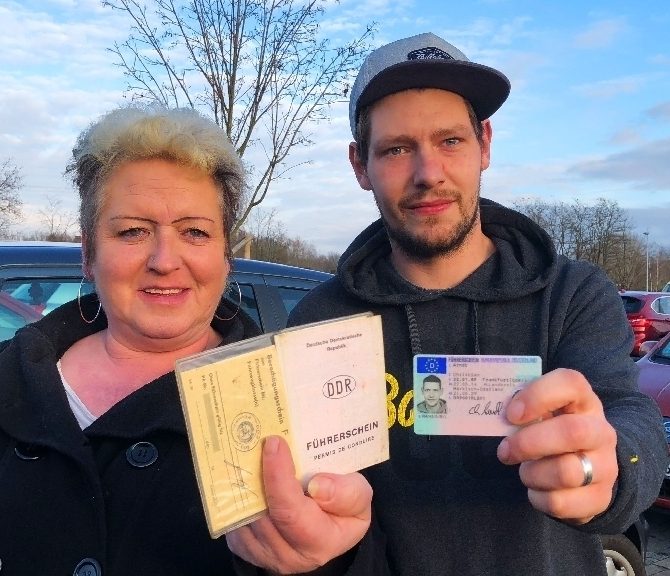A Trip Back In Time A Trip Back In Time: What People Talked About Buy A Driver's License Legally 20 Years Ago
How to Legally Buy a Driver's License: A Comprehensive Guide
Acquiring a chauffeur's license is a substantial turning point for many individuals, representing independence and the capability to travel freely. However, the processes and regulations surrounding obtaining a motorist's license can be complicated, leading some individuals to look for faster ways. It is vital to emphasize that acquiring a driver's license legally isn't about bypassing policies; rather, it's about comprehending the genuine processes for getting a driver's license in your jurisdiction. This article intends to notify readers about the proper procedures and standards for getting a motorist's license legally.
Comprehending the Legal Process of Obtaining a Driver's License
Before delving into the requisite actions for getting a chauffeur's license, it's necessary to understand the legal framework that governs these procedures. Each state or country has its own Department of Motor Vehicles (DMV) or comparable authority, which manages the issuance of driver's licenses. Here's a breakdown of the common steps associated with getting a chauffeur's license legally:
Step
Description
1
Eligibility Check: Verify age, residency, and other requirements.
2
Student's Permit (if required): Some areas require getting a learner's permit before getting a full license.
3
Chauffeur's Education: Complete any needed driver's education courses.
4
Practice Driving: Accumulate the needed number of practice hours.
5
Written Test: Pass a written examination covering traffic laws and guidelines.
6
Roadway Test: Successfully complete a driving test with an examiner.
7
Application Submission: Submit the application together with needed documents and charges.
8
Receiving the License: After passing all tests and meeting requirements, receive the chauffeur's license.
Step-by-Step Breakdown of Each Phase
1. Eligibility Check
The first step towards obtaining a motorist's license is to verify that you satisfy the eligibility criteria. Generally, this consists of being of a particular age (typically in between 16 to 18 years), being a homeowner of the state in which you are using, and having valid identification.
2. Learner's Permit
In many locations, you must initially get a student's authorization, which permits you to practice driving under specific limitations. This permit often needs passing a preliminary written test and is generally offered to more youthful candidates.
3. Motorist's Education
Numerous states mandate completion of a chauffeur's education course that consists of both classroom instruction and behind-the-wheel training. This education assists brand-new drivers comprehend safe driving practices and state-specific traffic laws.
4. Practice Driving
Most jurisdictions need a set number of hours driving under guidance before you can take the road test. Check your state's regulations to find out the number of hours are needed and what external conditions are required (e.g., night driving).
5. Written Test
Before taking the road test, applicants need to typically finish a composed evaluation. This test normally assesses knowledge of roadway indications, traffic laws, and safe driving techniques.
6. Roadway Test
The roadway test examines your practical driving skills. hop over to this site will assess your ability to deal with a vehicle while obeying traffic laws throughout a set driving path.
7. Application Submission
After passing the tests, you will require to send an official application for your motorist's license. This can usually be carried out in person at your regional DMV workplace or sometimes online. Ensure you have the needed files, such as identity confirmation and proof of residency, and be prepared to pay the license charge.
8. Getting the License
As soon as all requirements are satisfied, you will get your motorist's license. Note that in some jurisdictions, a provisionary license may be provided initially, followed by a complete license after keeping a tidy driving record for a given period.
Frequently Asked Questions (FAQs)
1. Can I use a foreign chauffeur's license in the United States?
Yes, lots of states enable tourists to drive with a valid foreign driver's license for a set period. Nevertheless, it's necessary to inspect specific state regulations, as the guidelines differ.
2. What is the minimum age to get a driver's license in the United States?
This differs by state, however the minimum age is generally between 16 and 18 years. It is recommended to check with your state's DMV.
3. The length of time does it take to receive a chauffeur's license after passing tests?
As soon as all requirements are fulfilled, many states release the license on the same day, typically in the form of a temporary license up until the official card gets here by mail.
4. What files do I need to apply for a driver's license?
Documents often consist of proof of identity (passport, birth certificate), evidence of residency (utility costs, lease), Social Security number, and often, school presence records for minors.
5. Can I get a motorist's license if I have a criminal record?
Having a criminal record might affect your ability to obtain a chauffeur's license, particularly if the offense connects to car operation. Regulations vary by state, so it's essential to investigate specific requirements.
Acquiring a driver's license legally needs a clear understanding of the particular procedures, requirements, and guidelines in your location. While it might appear cumbersome, following the correct actions guarantees safety, compliance with the law, and a valid license that supports the freedom to drive legally. By focusing on education, practice, and adherence to legal guidelines, potential drivers can with confidence browse the journey to becoming certified motorists.
